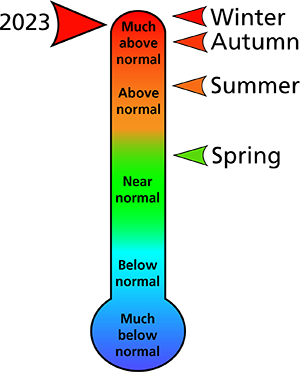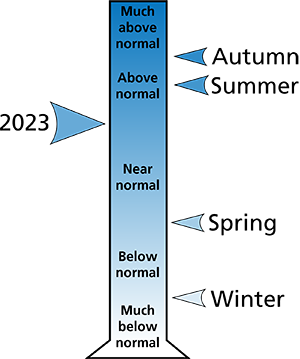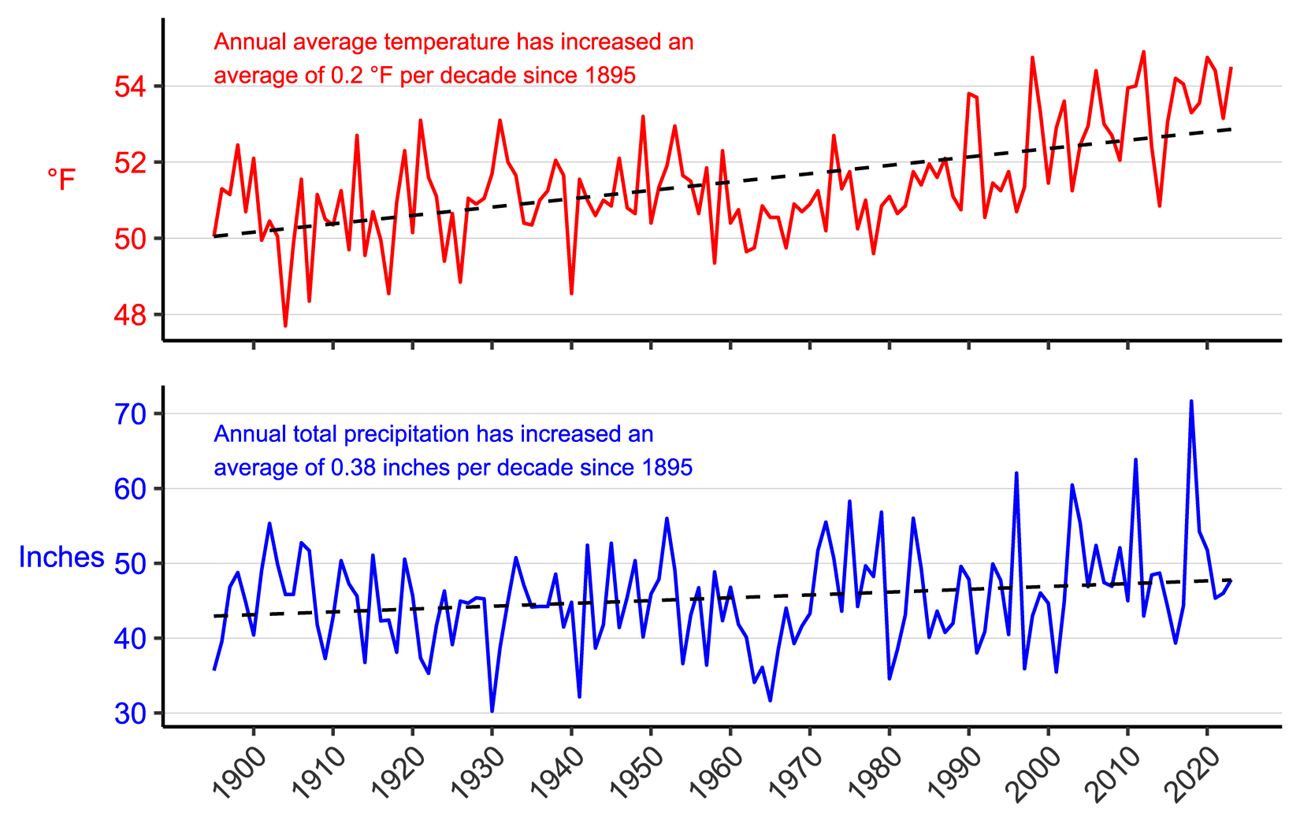Last updated: January 17, 2025
Article
2023 Weather in Review: Hopewell Furnace National Historic Site

NPS / J. Holzer
In order to better understand ecosystem health in national parks, the Mid-Atlantic Inventory and Monitoring Network measures ecosystem "vital signs" across the Mid-Atlantic region. One of those vital signs is weather and climate. Below is a summary of 2023 weather conditions at Hopewell Furnace National Historic Site.
This brief provides county-scale weather data averaged from all of the counties surrounding the park, including data from 1895–2023 (i.e., period of record). These counties include Berks and Chester counties, PA. Data and analyses herein are courtesy of the National Oceanic and Atmospheric Administration's (NOAA) Climate at a Glance Program.
Weather vs. Climate
First of all, what is the difference between weather and climate? Weather consists of the short-term (minutes to months) changes in the atmosphere. Weather is what is happening outside at this very moment, be it rain, snow, or just a warm sunny day. Climate is what you expect to see based on long-term patterns of over 30 years or more. An easy way to remember the difference is that climate is what you might expect, like a hot summer, and weather is what you get, like a warm rainy day.
The following information includes a discussion of 2023 weather placed in the context of long-term climate (i.e., how did 2023 compare to a "normal" year?).
2023 Summary
In all, 2023 was extremely warm but had total precipitation that was closer to normal. The year ended as the 5th warmest and 42nd wettest on record for the park (since 1895). Data indicate that over the long term, annual average temperature and annual total precipitation have both increased in the counties surrounding the park (+0.2°F per decade and +0.38 inches per decade, respectively).
Temperature
In total, 2023 was the 5th warmest year ever recorded at the park — all seasons but spring were warmer than average (Figure 1). Nine months had higher than normal temperatures with December, January, and February all being at least 7°F above long-term averages (Table 1).

Table 1. Monthly and annual average temperature and departure from long-term averages. Departures from average show how different 2023 was compared to relevant averages from 1895-2022.
| Month/Year | Average temperature (°F) | Departure from long-term average (°F) |
|---|---|---|
| January | 39.4 | +10.8 |
| February | 38.8 | +8.6 |
| March | 41.5 | +2.3 |
| April | 55.1 | +5.2 |
| May | 59.0 | −1.6 |
| June | 67.2 | −2.0 |
| July | 75.8 | +1.9 |
| August | 72.5 | +0.6 |
| September | 66.6 | +1.6 |
| October | 56.8 | +3.2 |
| November | 41.8 | −0.8 |
| December | 39.7 | +7.2 |
| 2023 | 54.5 | +3.0 |
Precipitation
Total precipitation for 2023 was just above normal and was highly variable across the seasons (Figure 2). Over the year, a total of 47.8 inches of precipitation fell (Table 2), and the year ended as the 42nd wettest since 1895.

Table 2. Monthly and annual total precipitation and departure from long-term averages. Departures from average show how different 2023 was compared to relevant averages from 1895-2022.
| Month/Year | Total precipitation (in.) | Departure from long-term average (in.) |
|---|---|---|
| January | 3.77 | +0.40 |
| February | 1.38 | −1.60 |
| March | 2.57 | −1.14 |
| April | 4.13 | +0.42 |
| May | 0.45 | −3.51 |
| June | 5.72 | +1.58 |
| July | 7.15 | +2.62 |
| August | 3.16 | −1.32 |
| September | 5.55 | +1.52 |
| October | 1.86 | −1.63 |
| November | 3.02 | −0.31 |
| December | 9.03 | +5.44 |
| 2023 | 47.80 | +2.46 |
Temperature and Precipitation Trends
(1895-2023)
Data for Berks and Chester counties, PA indicate that annual average temperature has increased approximately +0.2°F per decade and annual total precipitation has increased approximately +0.38 inches per decade since 1895 (Figure 3).
National Park Service scientists have forecast future changes in climate too. Models estimate that by 2100, annual average temperature at the park will increase by 3.1–9.0°F (from a best-case to worst-case scenario, respectively). Annual total precipitation is expected to increase by 7–14% (see Gonzalez et al., 2018 for details).

Climate Change
Today's rapid climate change challenges national parks in ways we've never seen before. Wildlife migrations are altered, increasingly destructive storms threaten cultural resources and park facilities, habitat is disrupted—the list goes on. Go to the NPS Climate Change site to discover how climate change is affecting our nation's treasures, what the National Park Service is doing about it, and how you can help.The Mid-Atlantic Network's Weather and Climate monitoring program can be found here. For more information, contact Mid-Atlantic Network Biologist, Jeb Wofford. Data included in this article were obtained from NOAA's NClimDiv dataset (version v1.0.0-20240105).
Click here to download a printable version (pdf) of this article.
